EYE ON THE SKY
Dust to dust
As this massive star dies, its cosmic dust holds the ingredients out of which new planets may form
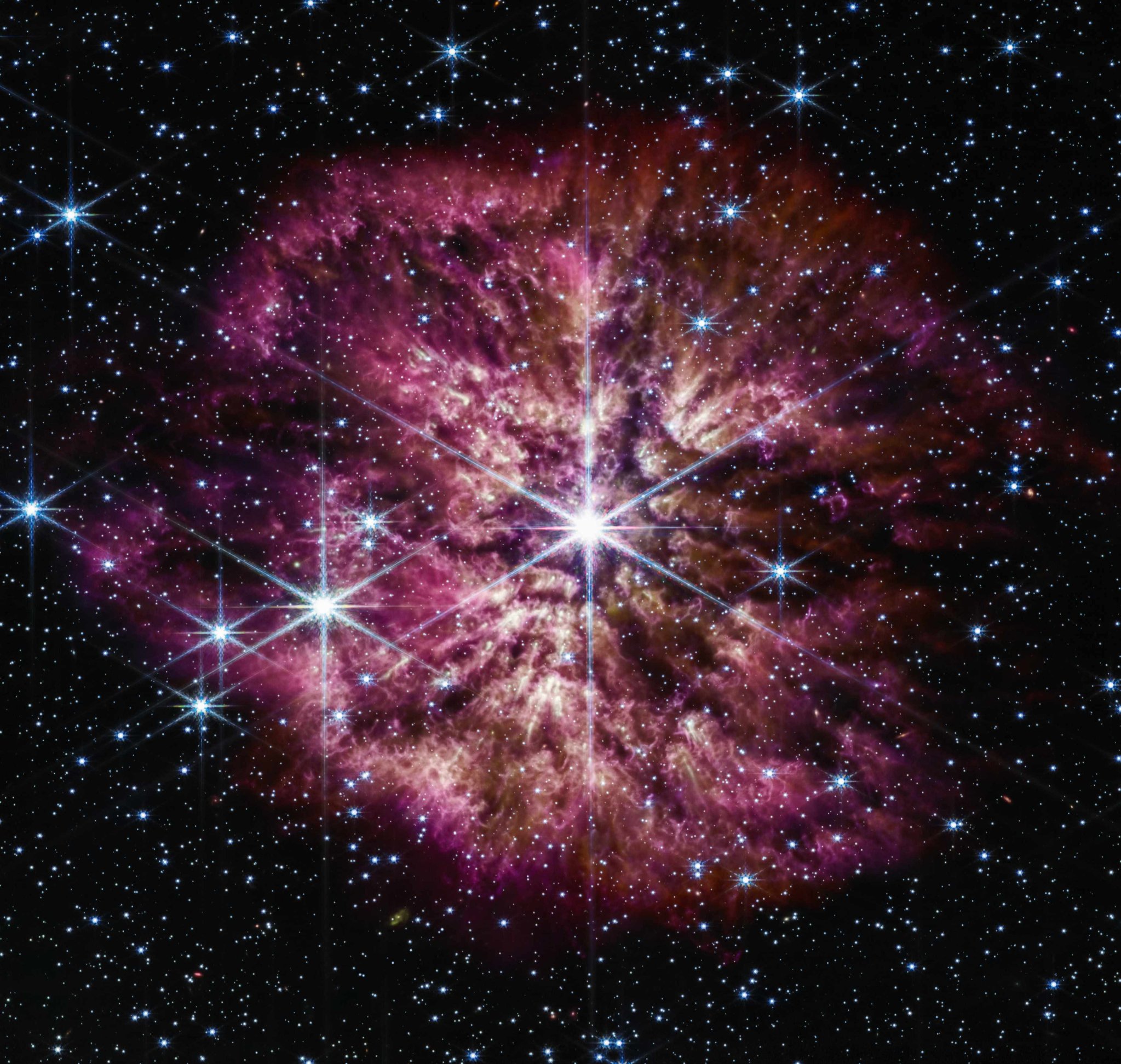
JAMES WEBB SPACE TELESCOPE, 14 MARCH 2023
Nothing can last forever, and as some massive stars reach their final moments, they live briefly as Wolf–Rayet stars. This one, Wolf–Rayet 124, or WR 124, is found in the constellation Sagitta, some 15,000 lightyears away.
WR 124 is 30 times the mass of our Sun, and its surrounding nebula, M1-67, is 10 lightyears across. But the star is losing material rapidly, pushing out elements like helium, nitrogen and carbon as cosmic dust – elements that were key to the formation of stars and planets in the early Universe, and which may precipitate new bouts of star formation in the future. This dust is best observed in infrared, and Webb’s powerful instruments pick out the clouds ringing WR 124 with stunning clarity.
So far, scientists estimate that WR 124 has shed 10 Suns’ worth of material, and it’ll continue to lose mass as it heads toward its dramatic ending as a supernova. Whether the elements in WR 124’s dust will survive the star’s fatal explosion, we just don’t know.
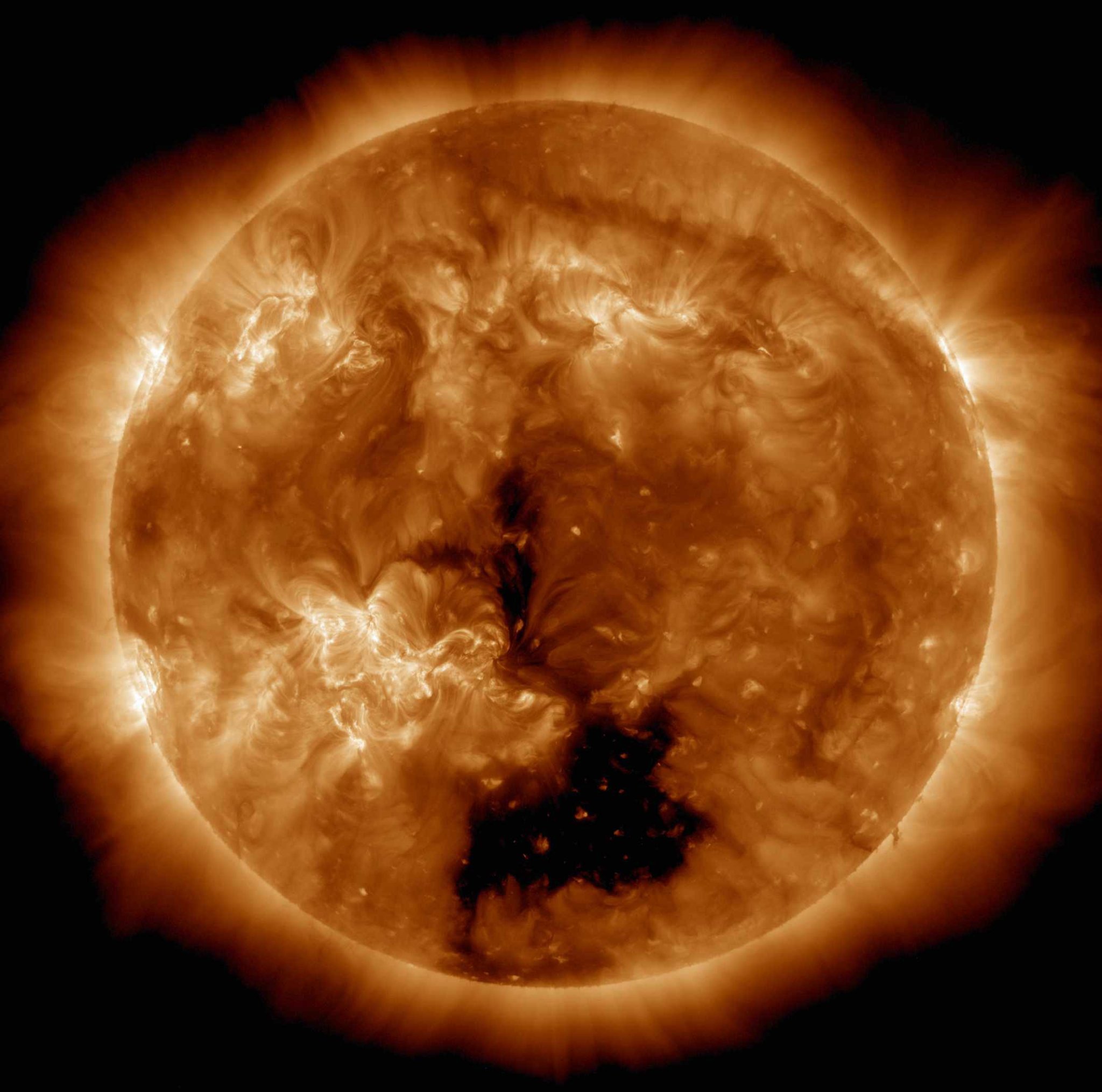
Weathering the storm
NASA SOLAR DYNAMICS OBSERVATORY, 23 MARCH 2023
A huge coronal hole on the southern hemisphere of the Sun saw the US Space Weather Prediction Center put in place a ‘geomagnetic storm watch’ in late March. Coronal holes are regions of open magnetic field lines where the solar wind escapes more readily. These geomagnetic storms were rated ‘moderate’, but storms can affect the power grid, satellites and the behaviour of migratory animals, as well as causing increased aurora displays.
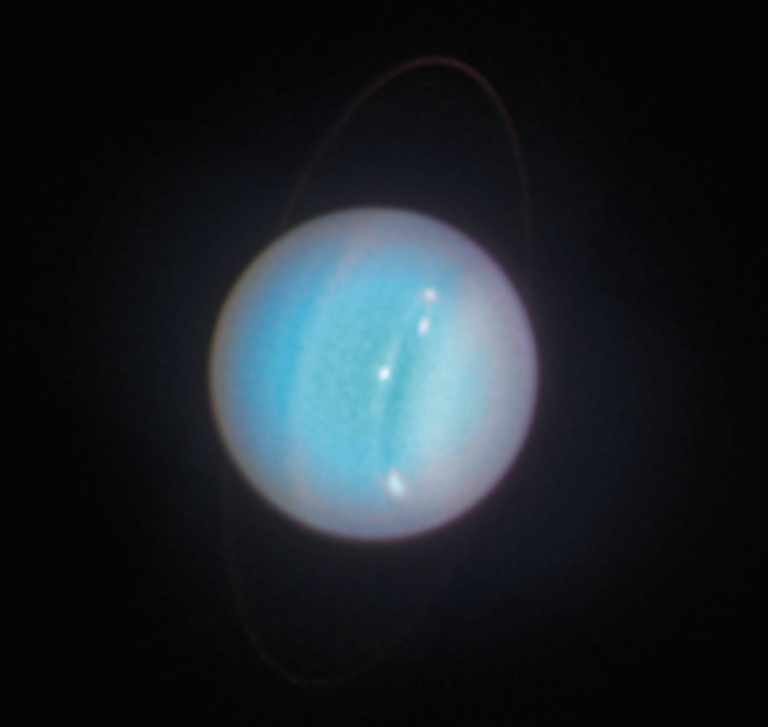
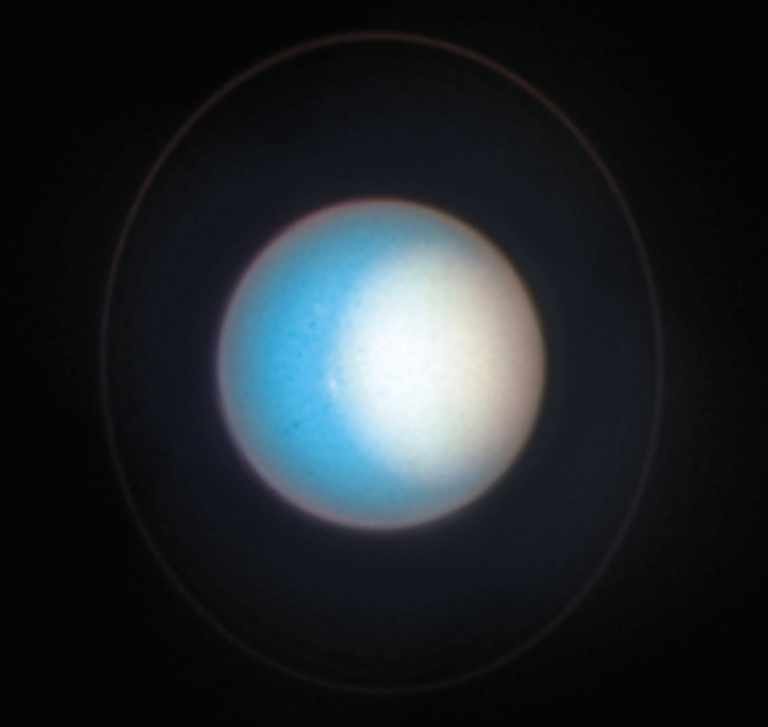
Ice giant’s brightening cap
HUBBLE SPACE TELESCOPE, 23 MARCH 2023
These Hubble views show changes at Uranus over eight years. Left, storms of methane-ice clouds are dotted against the light-blue lower atmosphere, the ring system slightly tilted. Eight years later, the ring is virtually face-on, the north pole covered in thick haze. This polar region is brightening every year and, by northern summer solstice in 2028, it and the ring will be face-on, giving us a wonderful view of the mysterious, blue ice giant nearly 3 billion kilometres away.
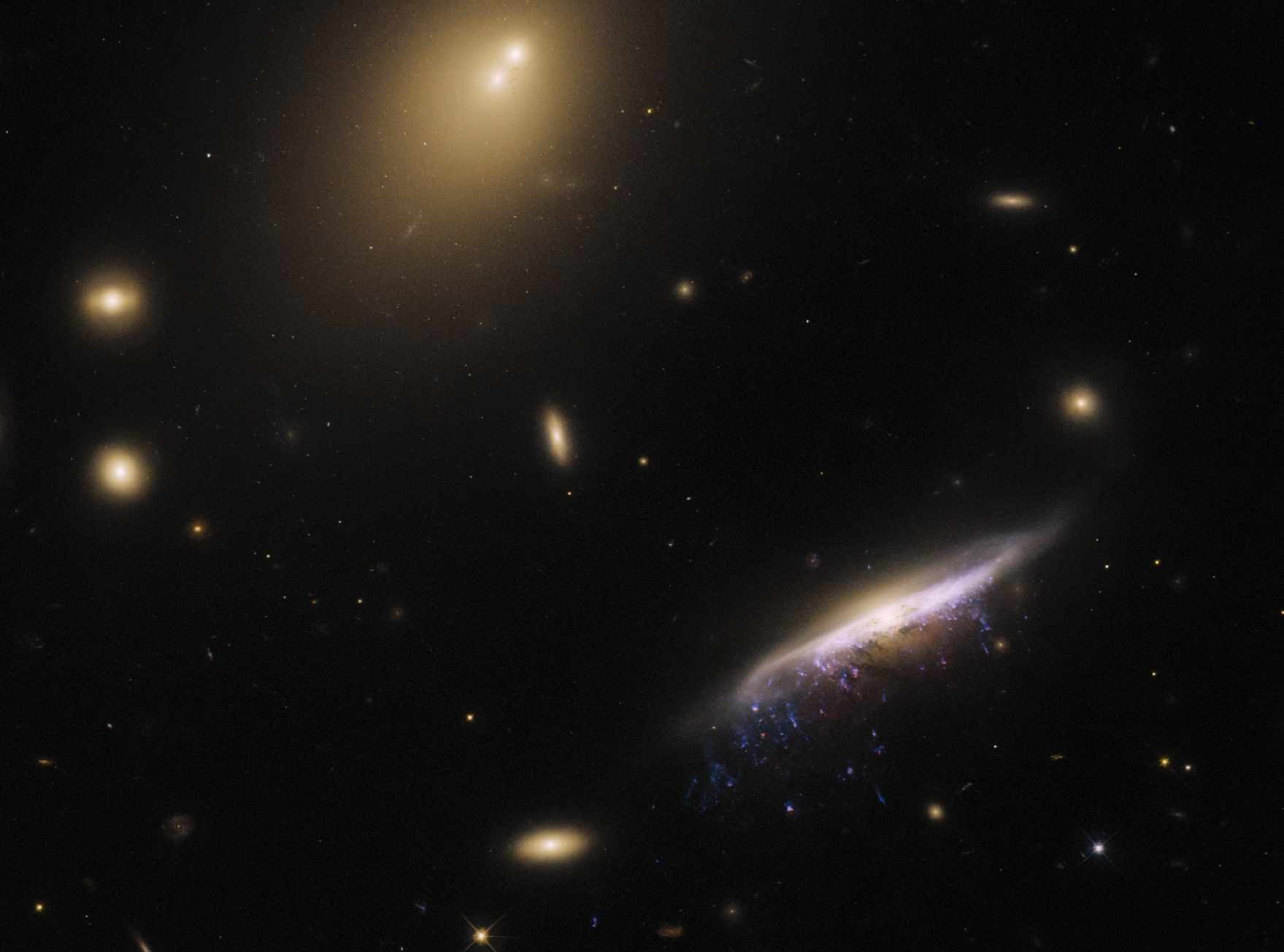
Jellyfish out of water
HUBBLE SPACE TELESCOPE, 20 MARCH 2023
As galaxies move in space, some encounter gas clouds that, as they have here with galaxy JW100 in the constellation of Pegasus, act almost like a wind. Gas and dust from the galaxy have been stripped out in tendrils that hang behind JW100, leading astronomers to refer to it as a ‘jellyfish’ galaxy. Observations of these galaxies by Hubble help us understand how stars can sometimes form in the jellyfish’s ‘tentacles’.
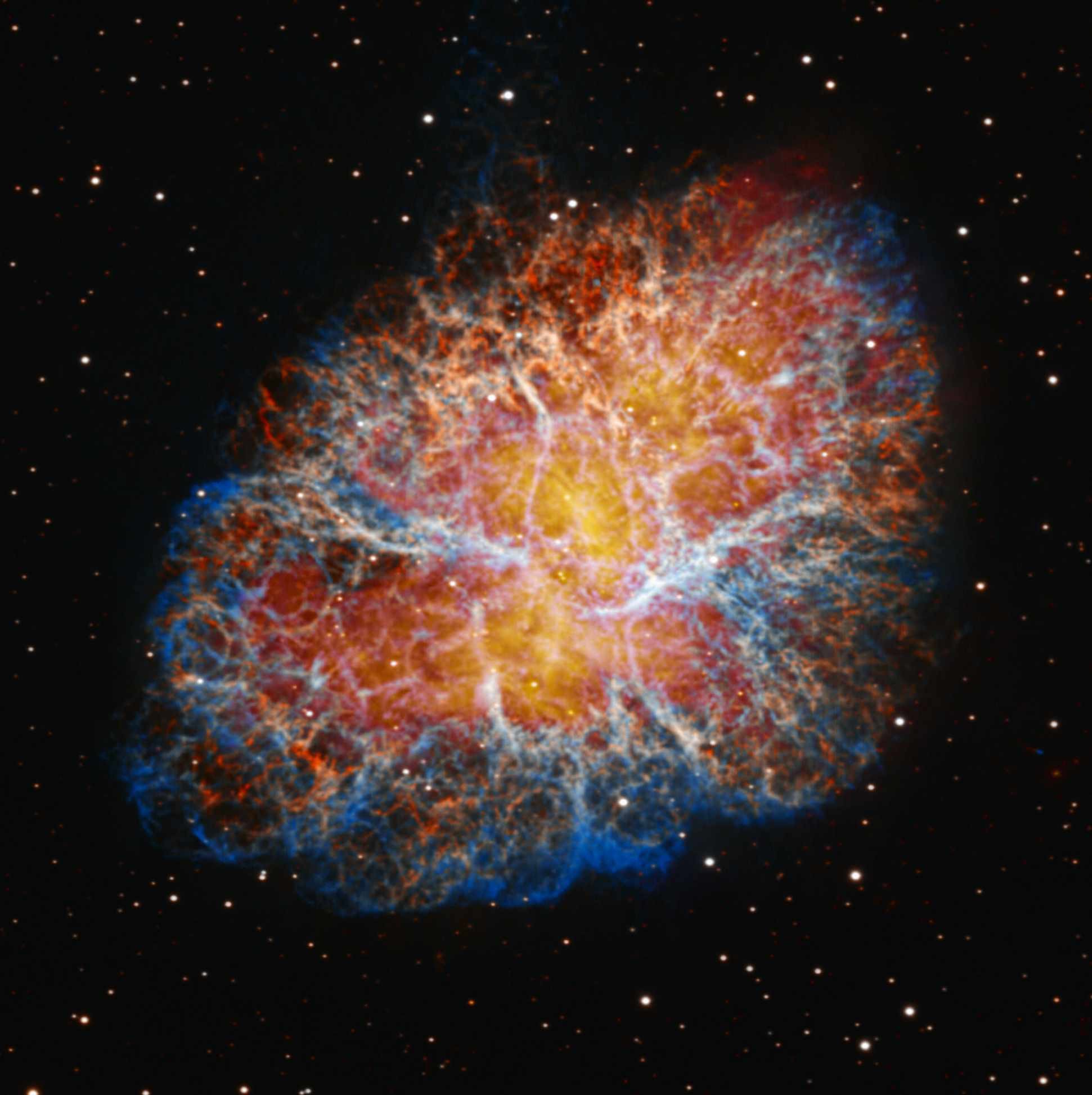
Crab in colour
NICHOLAS U MAYALL TELESCOPE, 15 MARCH 2023
M1, the Crab Nebula, is a supernova remnant thought to have exploded in 1054. At its heart is a neutron star, the Crab Pulsar, which emits radiation detectable by instruments like the Mayall telescope. You’d be forgiven for failing to see a crustacean here – the name stuck after astronomer William Parsons, the Earl of Rosse, made a crab-like drawing while viewing M1 in 1844 through his 36-inch telescope at Birr Castle, Ireland; though even he couldn’t see the likeness upon second viewing.
MORE ONLINE
Explore a gallery of these and more stunning space images
www.skyatnightmagazine.com/bonus-content/KZRG5FS